There were pleasant surprises on our way north on I-95. Fortunately, we did not have to suffer through the extensive traffic slowdowns experienced on our last trip north. Swatches of color along the roadside in northern Virginia and beyond to Philadelphia were signs of the late October season. And from our ninth floor hotel room, the urban forest exhibited the fall hues of tree canopies amidst fine buildings.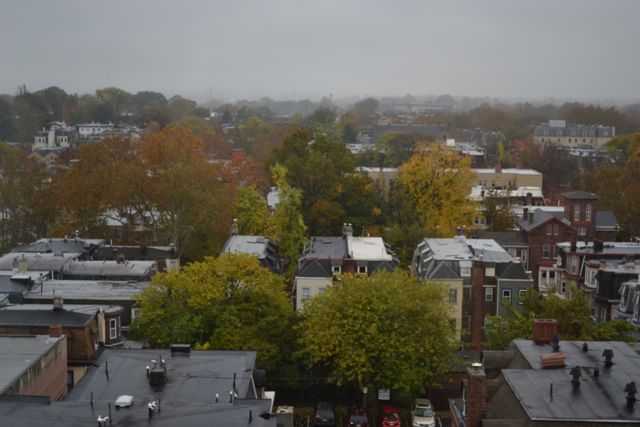
I was out on the street early to explore the university city district, containing two major universities: Drexel, and the U. of Pennsylvania (Penn). Along many streets a number of trees gleamed with golden foliage.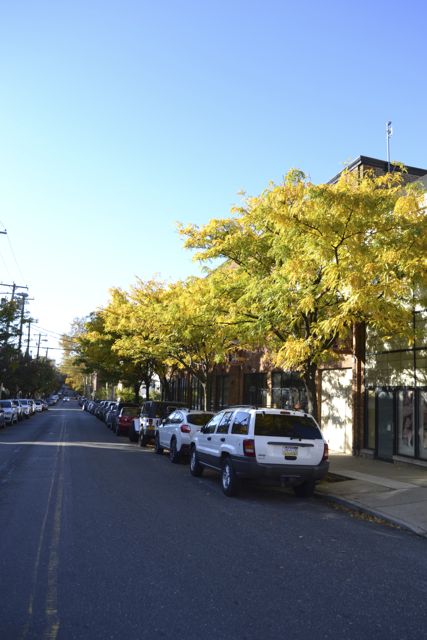 The rain increased as I made my way through Penn. The campus was stunning: impressive architecture, and well maintained trees both young and old. A main walkway through the campus was the Locust Walk, a continuation of Locust Street to the west. Many of the trees were labeled with species names, and a number of these species were not native to the Lowcountry of South Carolina. Some of the labels contained more detailed information, such as the following elm.
The rain increased as I made my way through Penn. The campus was stunning: impressive architecture, and well maintained trees both young and old. A main walkway through the campus was the Locust Walk, a continuation of Locust Street to the west. Many of the trees were labeled with species names, and a number of these species were not native to the Lowcountry of South Carolina. Some of the labels contained more detailed information, such as the following elm. 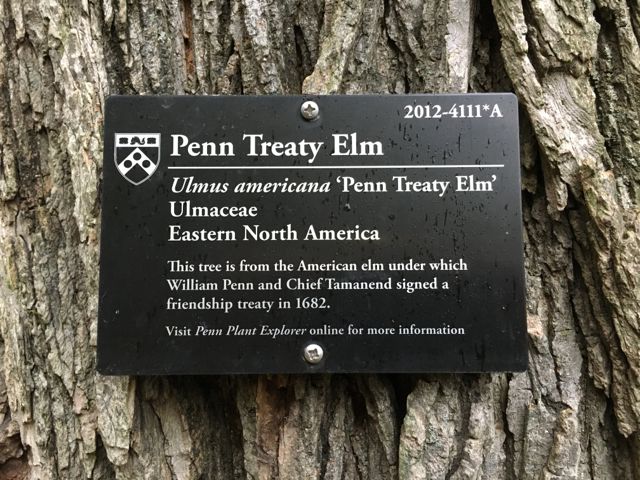 So this was a historic tree, or at least the “child” of one. The label also gave a guide to discovering much more about Penn’s botany – the Penn Plant Explorer.
So this was a historic tree, or at least the “child” of one. The label also gave a guide to discovering much more about Penn’s botany – the Penn Plant Explorer.
This web turned out to be a incredible resource, and helped me to identify the golden leafed trees throughout the Philadelphia streetscape. They were a cultivar of honey locust – a variety of a native tree that horticulturalists have produced without thorns, creating a more friendly version for planting along sidewalks. The Penn Plant Explorer identified each tree with GPS coordinates, and expanded my tree knowledge.
I had learned of the existence of Bartram’s Gardens on my previous trip, and used Google Maps to find the directions. Determining that it was walkable, I set out on another urban hike, this one in dry weather, to reach this site of the first botanic garden in North America. The walk took me downhill past fine old residences divided up for student apartments, and crossing street names derived from trees – Walnut, Locust, Spruce, Pine.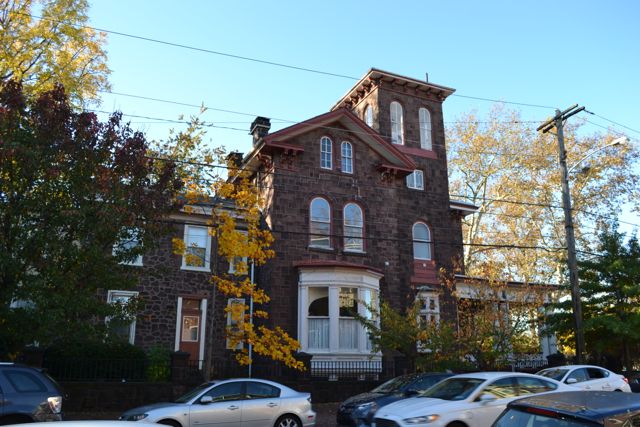 The residential community transitioned into another college campus – the University of the Sciences – and then town storefronts. After a turn, the manicured streetscapes gave way to sidewalks pressed by overgrown weeds and litter, an overpass with rail lines below, and an industrial part of the city. A section of row houses lined the other side of the street of this working class neighborhood.
The residential community transitioned into another college campus – the University of the Sciences – and then town storefronts. After a turn, the manicured streetscapes gave way to sidewalks pressed by overgrown weeds and litter, an overpass with rail lines below, and an industrial part of the city. A section of row houses lined the other side of the street of this working class neighborhood.
A last turn took me into the entrance road to Bartram’s Gardens; ginkgo trees lined the way. The Gardens, a 45 acre National Historic Landscape, was a destination of the walk; its site on the Schuykill River, a tributary of the Delaware River, was a draw. The John Bartram AssocIation partners with the City of Philadelphia to manage this public park in southwest Philadelphia.
I stopped in the visitor center to get a map and browse. In conversation with the staff person, I learned that her nearby residence’s city water source is the Schuykill River, and she stated she drinks the “Schuykill Punch”. Taking a fairly direct path to the river, I passed by one must-see item on my list, what is reported to be the oldest ginkgo tree in North America. A neighbor of John Bartram, William Hamilton, received three specimens of the ginkgo in 1785, planted two at his estate Woodlands (a short distance upriver), and gave one to Bartram. Only Bartram’s survived of the three, and is a featured tree in the gardens.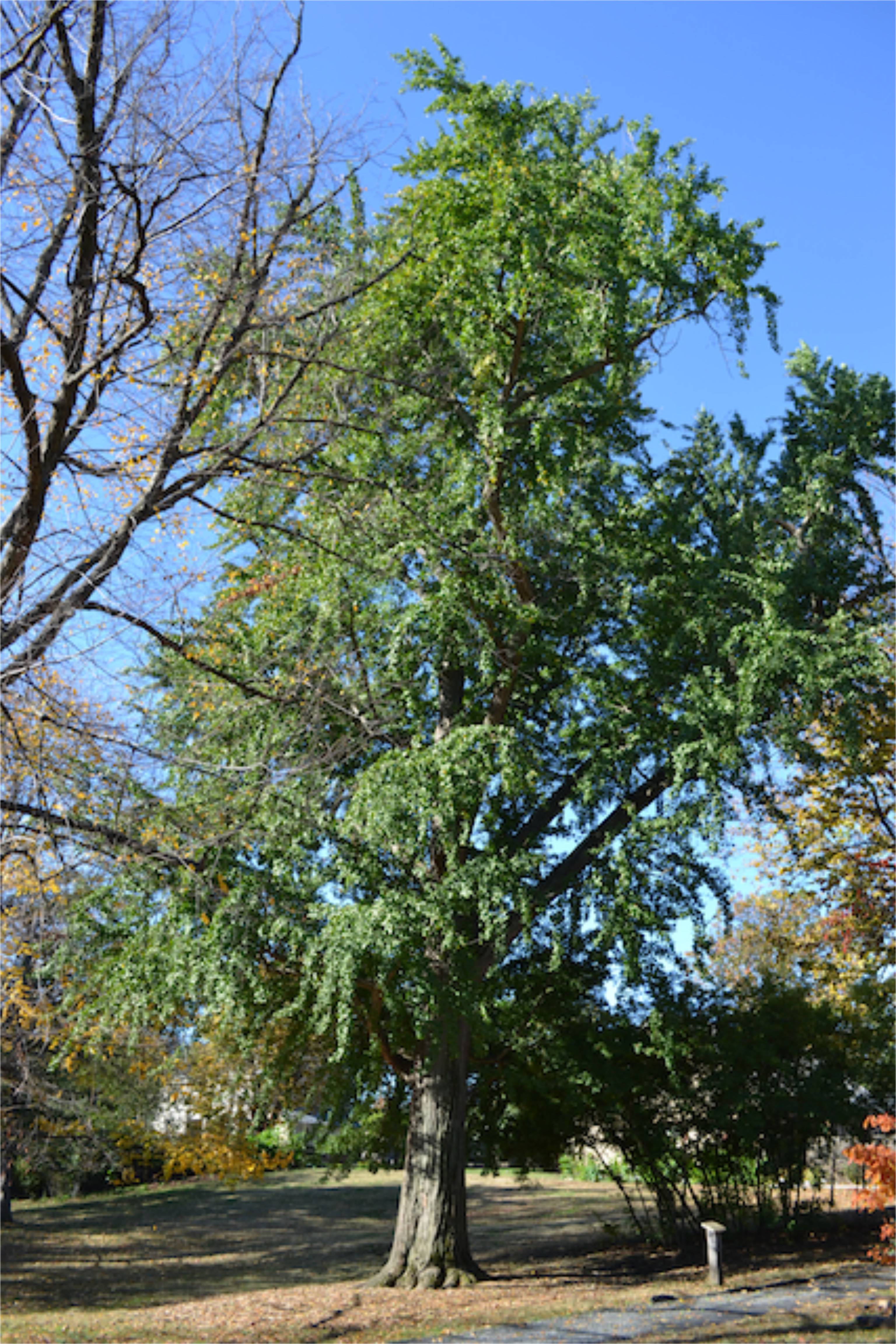 John Bartram, and then his sons John Jr. and William, developed this plant and tree nursery. It was a business that Bartram began after purchasing the land in 1728; he built a number of structures including his stone house. John the elder was friends with founding fathers Washington, Jefferson, and Franklin. William named a new species from Georgia (Franklinia alatamaha) after Franklin; this tree no longer exists in the wild and was saved from extinction by the Bartrams. Bartram’s seed boxes were shipped to Europe, and native North American plants and trees became part of the European landscape. He also planted trees from all thirteen colonies on his lands, utilizing various microclimates to accommodate different species.
John Bartram, and then his sons John Jr. and William, developed this plant and tree nursery. It was a business that Bartram began after purchasing the land in 1728; he built a number of structures including his stone house. John the elder was friends with founding fathers Washington, Jefferson, and Franklin. William named a new species from Georgia (Franklinia alatamaha) after Franklin; this tree no longer exists in the wild and was saved from extinction by the Bartrams. Bartram’s seed boxes were shipped to Europe, and native North American plants and trees became part of the European landscape. He also planted trees from all thirteen colonies on his lands, utilizing various microclimates to accommodate different species.
The view from the banks of the Schuykill presented a composite Philadelphia: natural beauty, refineries, and Center City skyscrapers.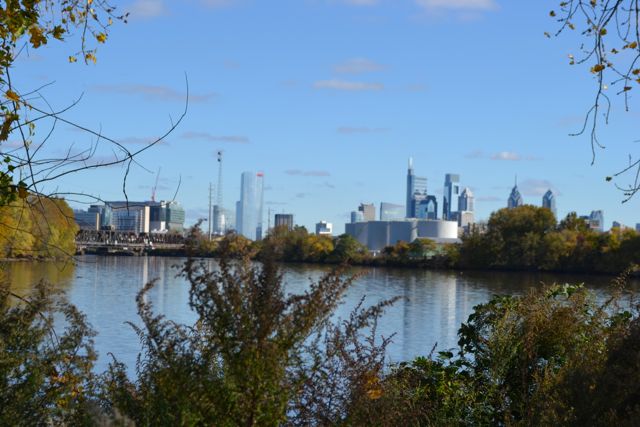 The trail passed an interesting feature: a cider mill that Bartram had carved out of the river bank’s bedrock. Downriver a bit, a close approach to the river revealed an abundance of plastic and other litter from higher waters. Inland from here, a robust community garden program was established as the Sankofa Community Farm.
The trail passed an interesting feature: a cider mill that Bartram had carved out of the river bank’s bedrock. Downriver a bit, a close approach to the river revealed an abundance of plastic and other litter from higher waters. Inland from here, a robust community garden program was established as the Sankofa Community Farm.
A walk the following day brought me to the Woodlands estate, originally owned by the plant collector William Hamilton, who was also friendly with several of the founding fathers. Though still containing a mansion, the lands were transformed into a cemetery in the nineteenth century. Hamilton’s collecting included many trees, some now of significant size and age. Rail lines separate the estate from the Schuykill. The property included a community garden, and remnants of a past greenhouse. Walkers and runners from the local community, including Penn students, accessed this property that is open to the public. The grounds were so rich with trees that a second visit in the rain was warranted. On the return walk through Penn a different courtyard was discovered, populated with honey locust trees: their leaves had turned brilliant gold, shining in the rain and covering the brick paving.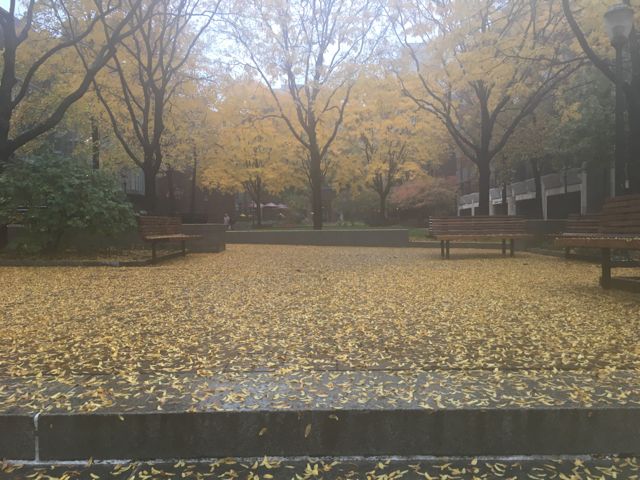
Returning to Awendaw, the botanizing in Philadelphia inspired a closer look at the native trees and shrubs of my 3.5 acres, an oak/hickory forest. The foliage of Lowcountry trees was behind the color changes seen to the north. I looked at the native trees on my land, noticing more acutely their details.
I sought out specimens of all the species, yet I could not locate any red oaks I was sure were on the property. Laurel oaks, water oaks, and live oaks were the dominant members of the oak family. On a second look on the back of the land, a small oak had a different and distinctive leaf, and my field guide pointed to overcup oak as the species.
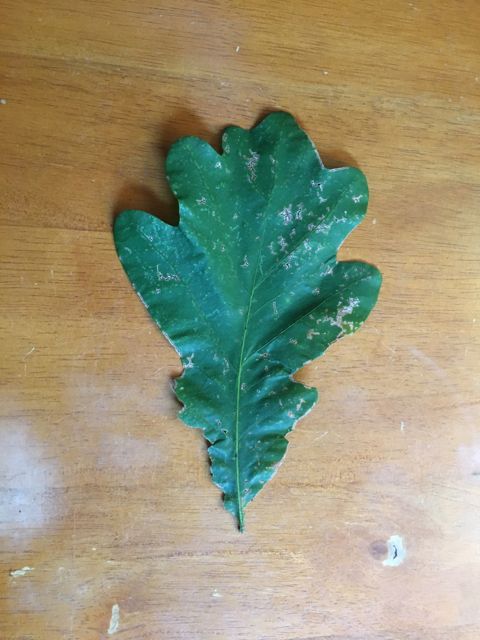 What other trees and shrubs are waiting to be discovered?
What other trees and shrubs are waiting to be discovered?
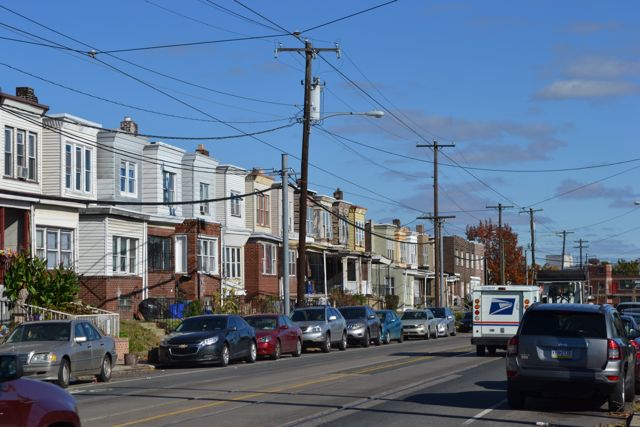
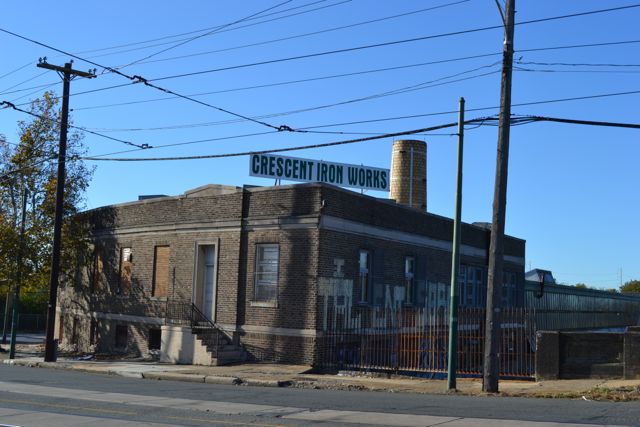
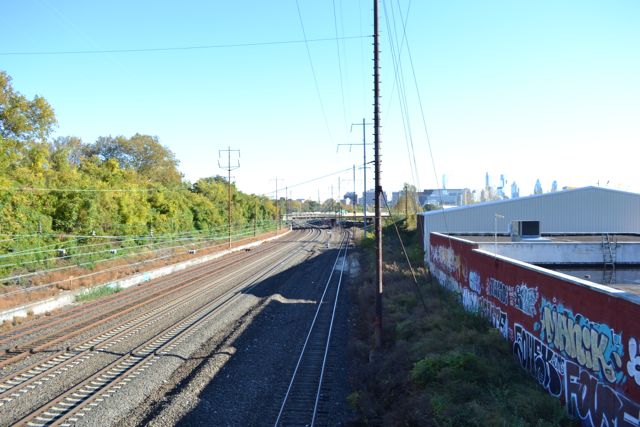
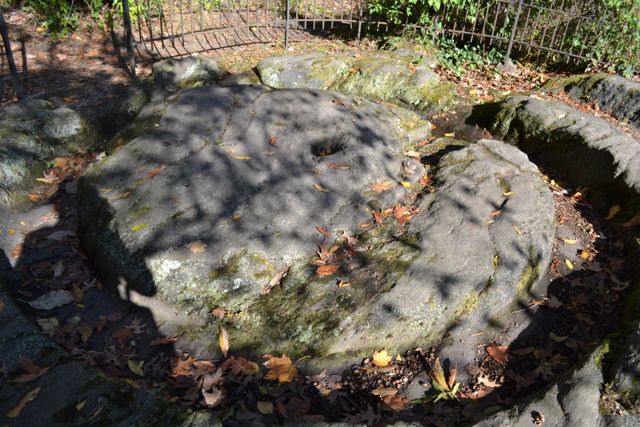
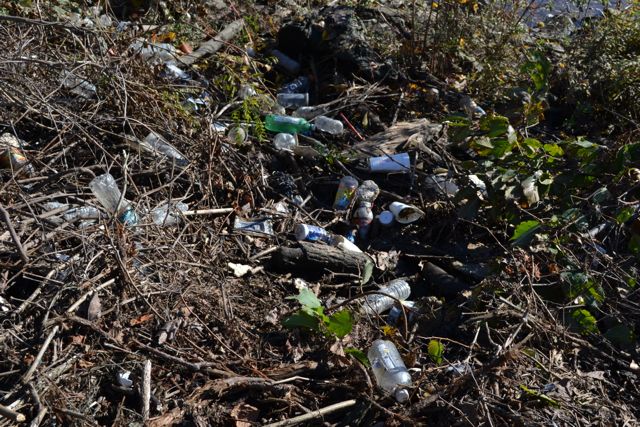
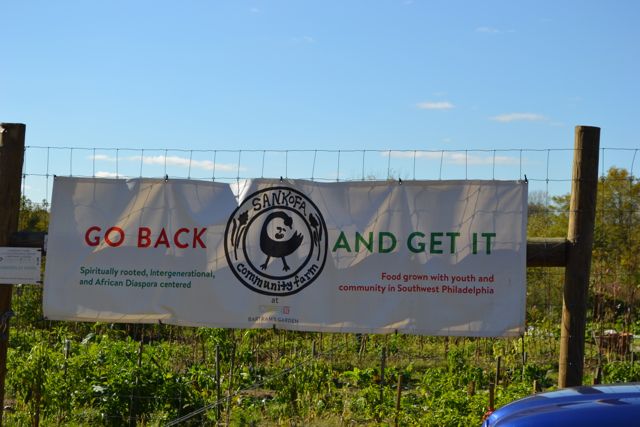
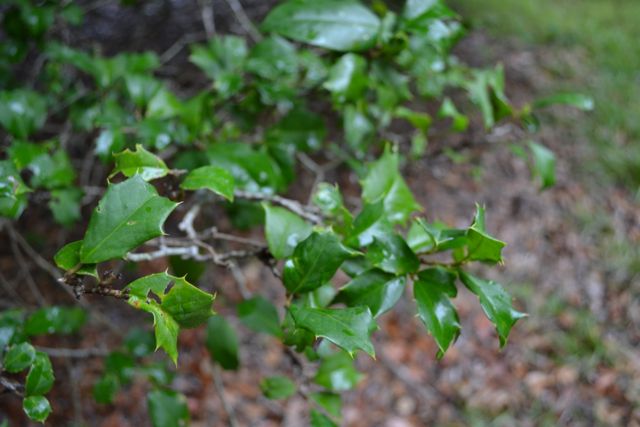
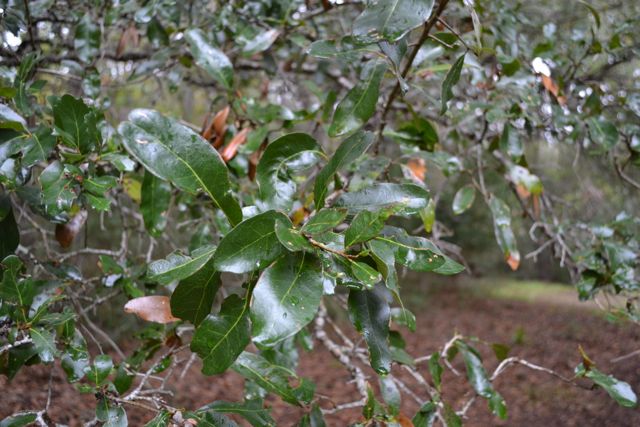
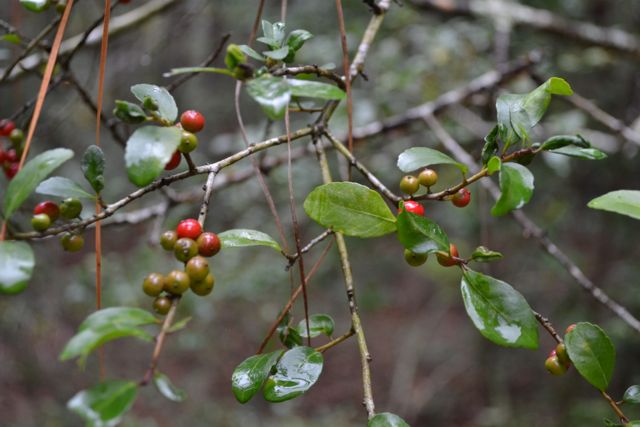
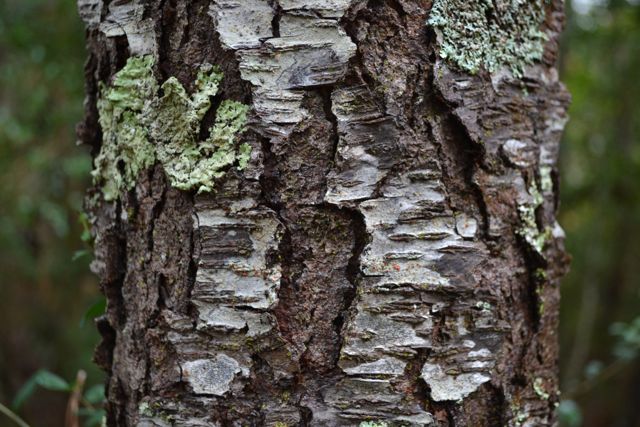
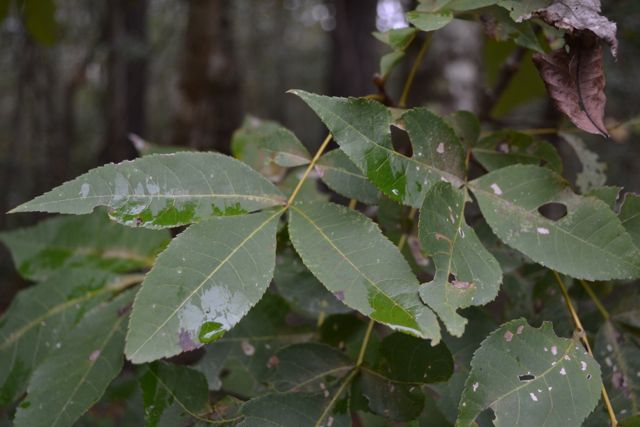
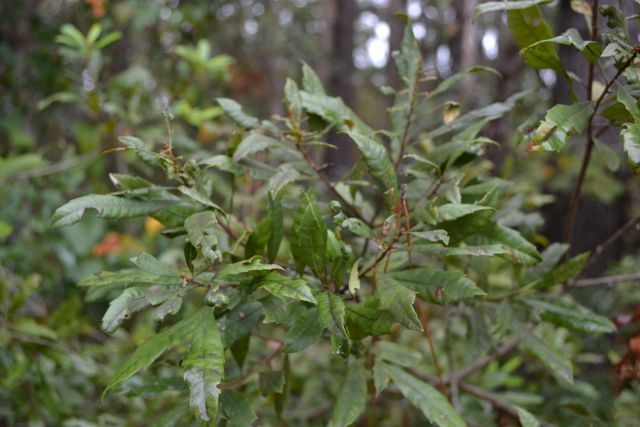
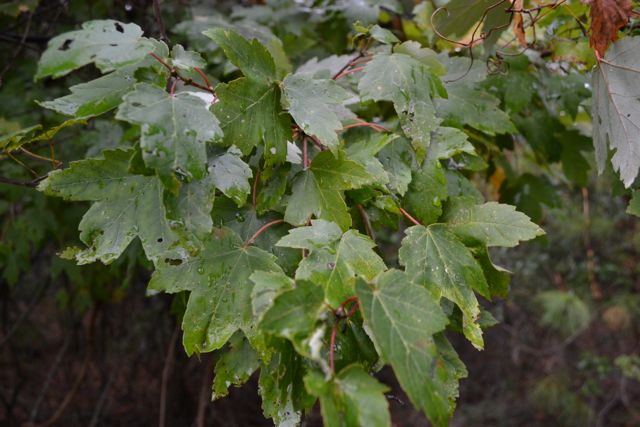
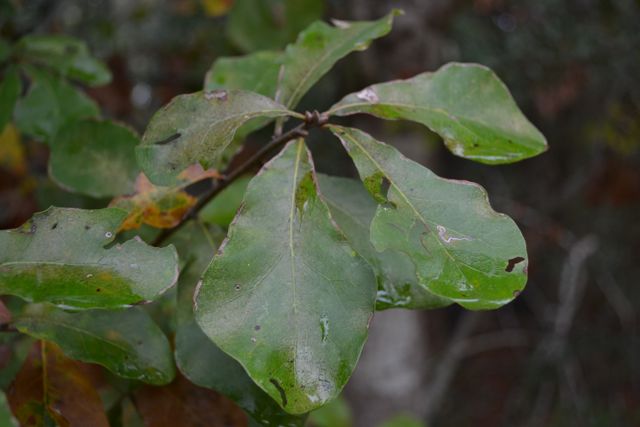
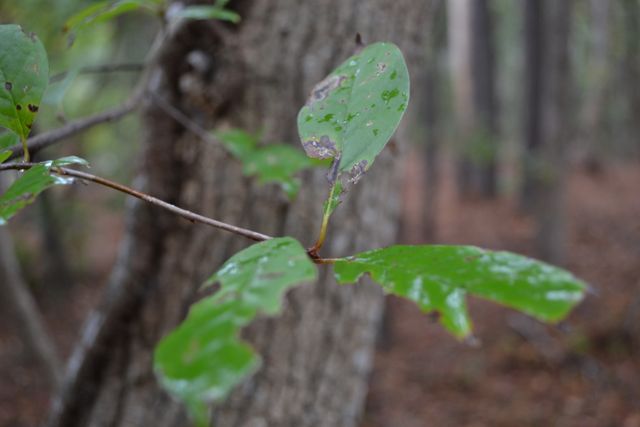
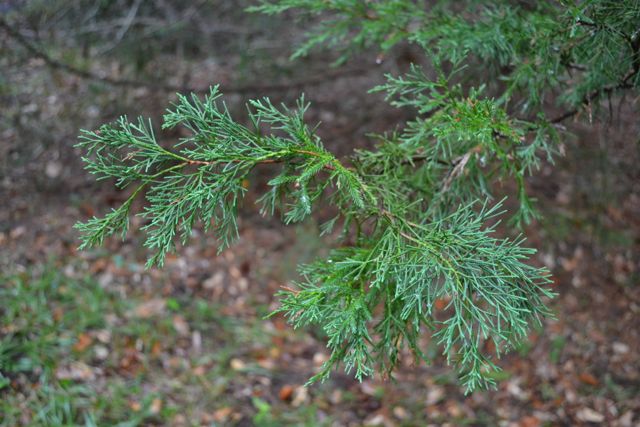
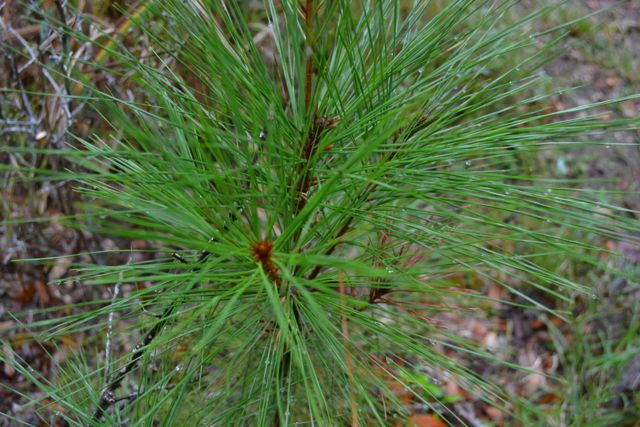
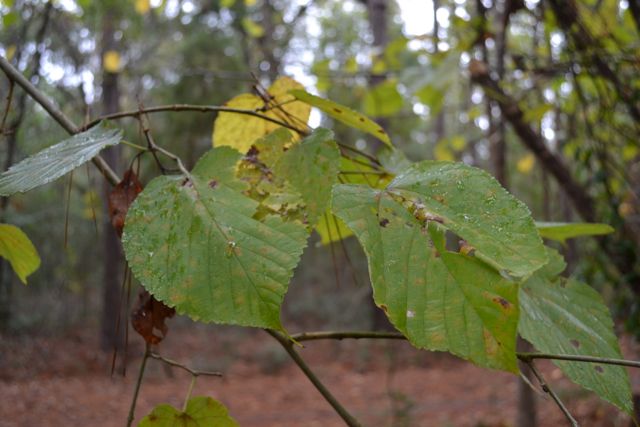
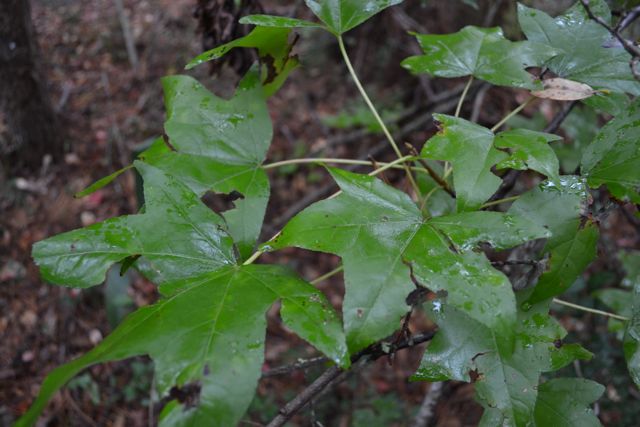
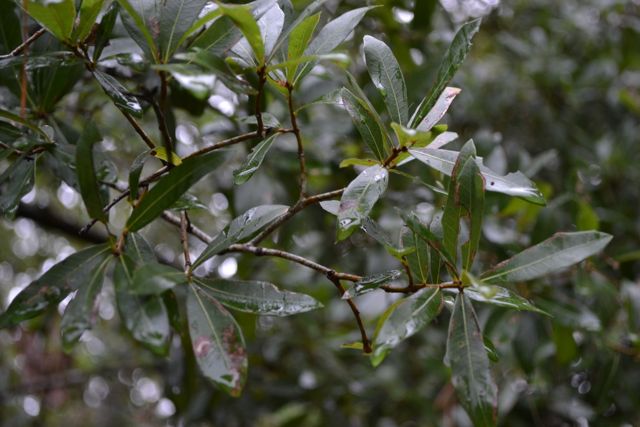
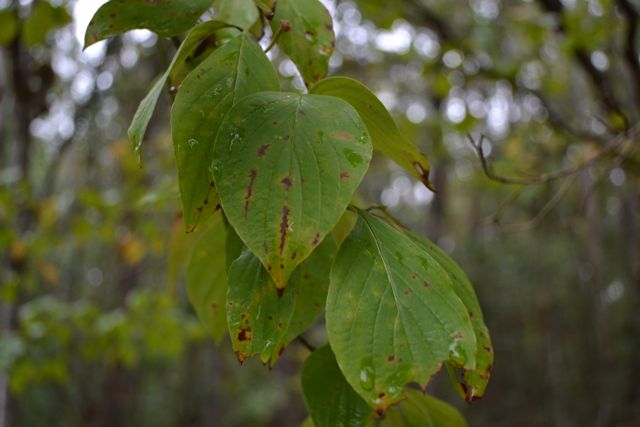
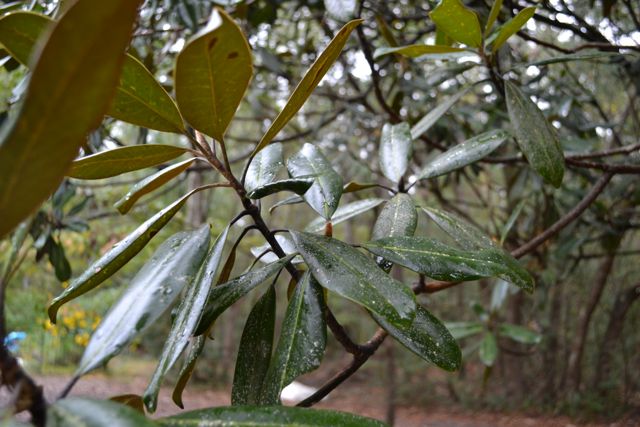
This was a wonderful piece to read, even though I was there with you, and I love all of your photos. The trees and their colors were so beautiful !
And every day here we are getting color change in our foliage, little by little.
Hi Bob,
Great to hear from you. Appreciate the post and you are quite the wordsmith.
All good here.
Best,
Langley
And good to hear from you up in the Garden State.